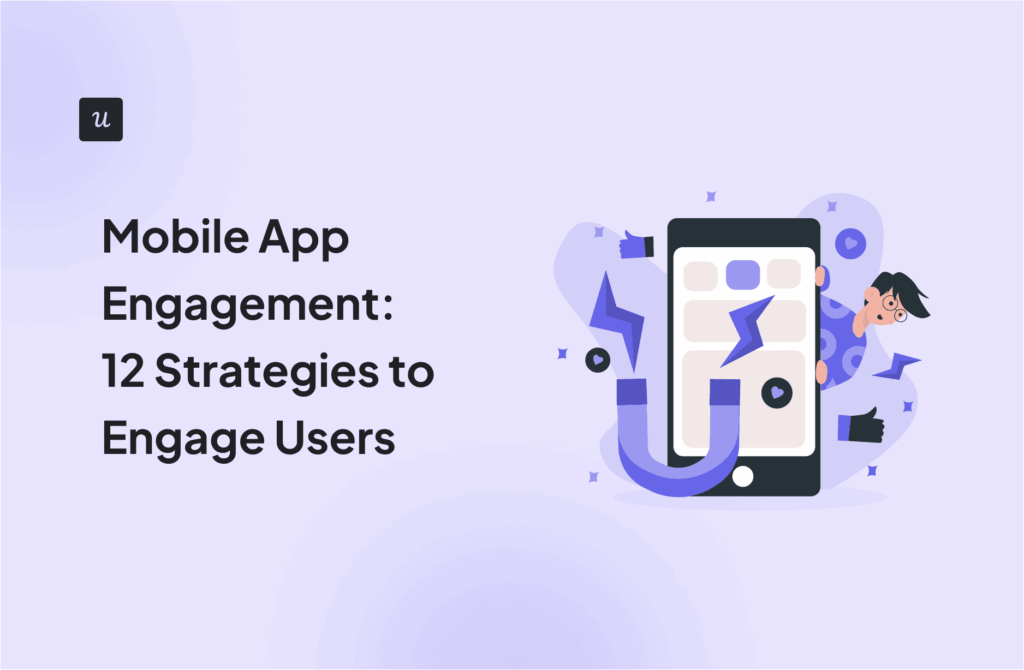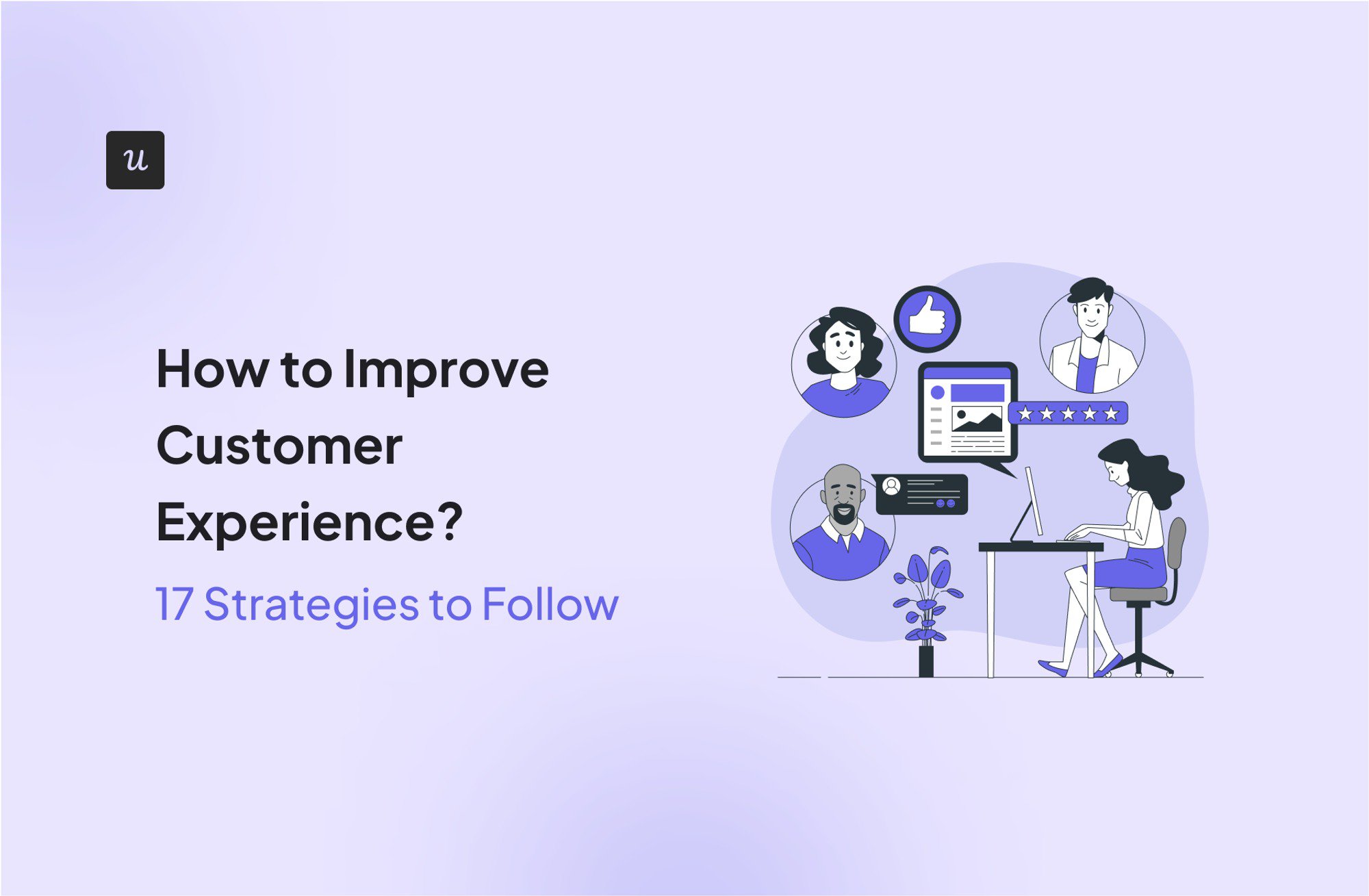
How to improve the customer experience of your SaaS product?
That’s the main question that this article explores!
More importantly, we share 17 engagement strategies to help SaaS companies enhance their CX.
Let’s get right to it.
Try Userpilot Now
See Why 1,000+ Teams Choose Userpilot

What is customer experience?
Customer experience (CX) describes how interactions with your product and brand make your customers feel.
In contrast to product experience and user experience, customer experience refers to the perception of the product at all stages of the customer journey, not just while using it.
For example, CX can be affected by how easy it is to find reliable information about the product, how smooth the sign-up process is, or how effective customer support is.
What is the impact of creating poor customer experiences?
Poor customer experience can have seriously negative consequences for your product and the company’s success.
Greater burden on the customer service team
Products with poor customer experience are challenging for customers, which keeps your customer service teams busier than they should be.
For example, if they get stuck while using the product because of usability issues, they may need to contact your customer support teams for help.
It’s a kind of downward spiral because the more queries your teams get, the longer it takes to clear the backlog, and this makes the CX even worse.
Lower customer satisfaction and loyalty
Poor customer experience harms customer satisfaction.
Firstly, it makes it more difficult to realize the product value. Even if your product satisfies user needs, it is hard work, and using it won’t fill them with delight.
It gets even worse if your customers don’t see any efforts to rectify their issues, as this weakens their loyalty.
Weak customer retention over time
Inadequate customer experience often leads to customer churn.
As mentioned, users may struggle to achieve their objectives using the product, and that’s more than enough to make them start looking for alternatives.
In a competitive market, customer experience could be a major differentiator that can sway your users to switch.
This leads to lower customer lifetime value, which is essential for business success.
Higher chances of negative word-of-mouth
Poor customer experience can also hurt the brand reputation and new customer acquisition.
Think about it:
How likely is a dissatisfied customer to recommend your product to their friends or leave a positive review on G2? Not very.
The consequence is that you have to spend more effort and resources to attract new customers, which increases their acquisition costs and undermines profit margins.
17 strategies to improve customer experience in your SaaS
Considering how important is creating positive customer experiences, let’s look at 17 tried-and-tested strategies that might help you with this.
1. Personalize the experience across the customer’s journey
Even though all your customers use the same product, they likely use it differently because they have different goals. For example, a manager will use a project management tool differently from freelancers working on the project.
To help them get to value, it’s essential to personalize their experiences. For example, by customizing their dashboards.
Start the process by defining your customer personas, creating customer journey maps for them, and optimizing each touchpoint in the journey to address their unique needs.
Finally, when new users sign up for the product, use welcome surveys to segment them based on their use cases so that you can target them with tailored experiences.
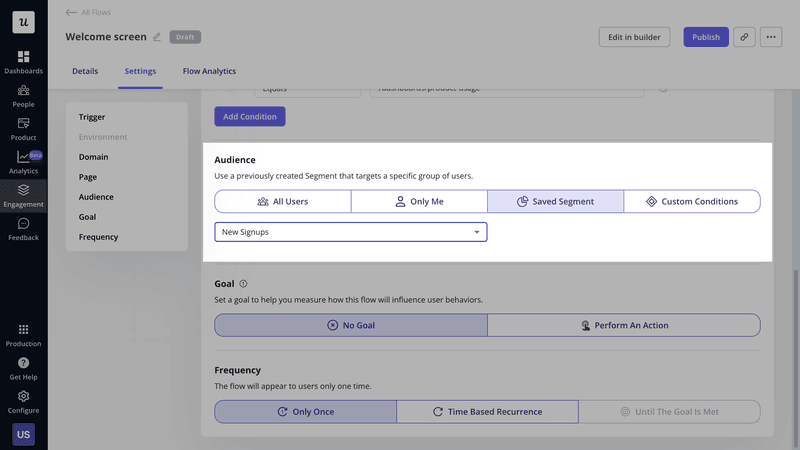
Strategies to improve customer experience: personalize flows for different segments.
2. Guide new users with interactive walkthroughs
Interactive walkthroughs are in-app patterns made up of tooltips that provide step-by-step guidance.
How can you use them to improve customer experience?
Create onboarding walkthroughs that introduce essential product features to new users when they log in for the first time.
Of course, make sure to personalize them for customers with different use cases to help them realize the product value in the quickest and most direct way.
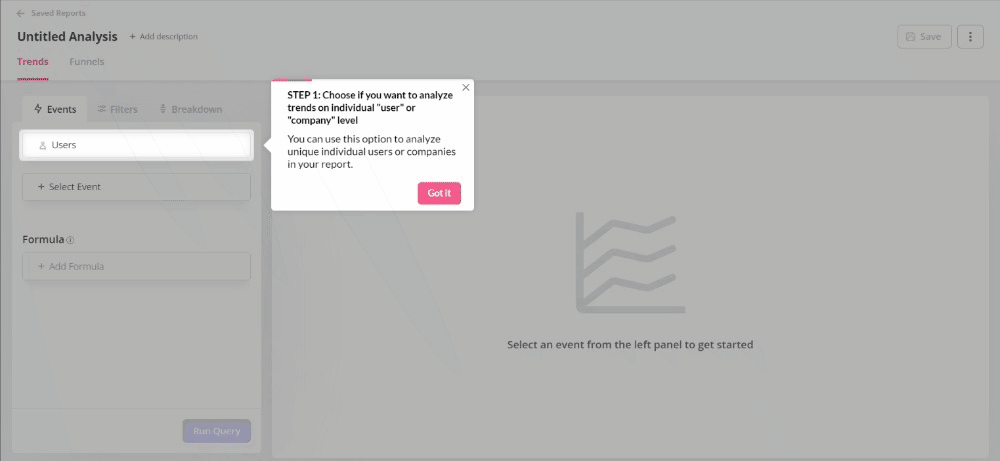
3. Remove friction points from the customer journey
Friction is one of the causes of poor customer experience because it slows users down or even prevents them from accomplishing their objectives inside the product altogether.
Fortunately, it’s fairly easy to find with the right analytics tool like Userpilot.
Start with funnel analysis to identify the stage in the user journey where users experience friction. You can find it either by looking at the chart or analyzing the drop-off rates at each stage.
Next, conduct path analysis to map out the user actions at the stage with friction. One indication of friction could be looped behaviors, like going back and forth between two pages.
Finally, analyze how customers interact with the particular page or product with screen session recordings. This will help you identify potential usability issues in the user interface.
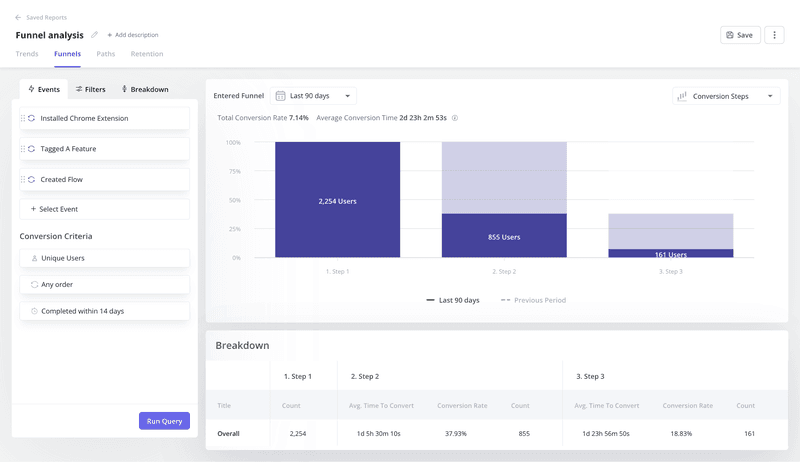
4. Regularly collect customer feedback
Dissatisfied customers often vent their frustration in their feedback. By collecting it regularly, you can identify the areas of the customer experience that need improving.
Honest feedback from customers can also help you understand why the experience is poor and even suggest ways to enhance it.
Examples of questions to ask include:
- How would you rate your overall experience with the product?
- What would you improve?
- How easy is it to navigate the product?
In addition to regular satisfaction surveys, consider enabling a feedback widget to collect passive feedback. This gives users the chance to submit their feedback whenever they feel the need.
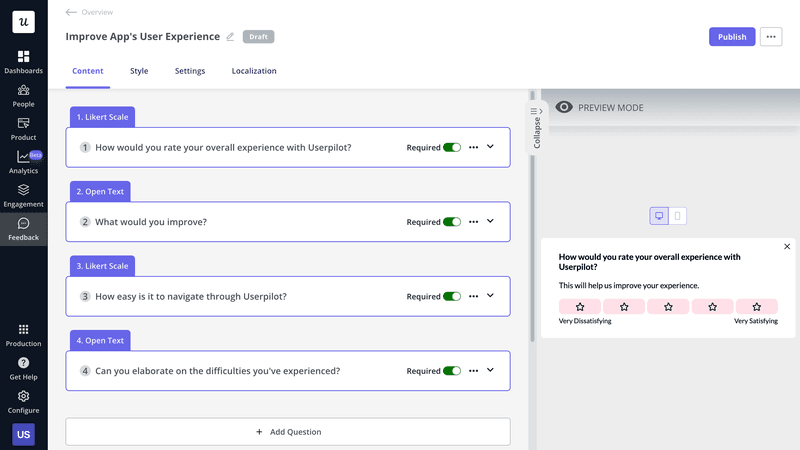
5. Localize the customer experience for different segments
Another way to provide excellent customer experience through personalization is by localizing your content for different user demographics.
As a SaaS business, you probably have customers all over the place, and not all of them speak your language as a native tongue.
Translating the in-app messages, support resources, and survey questions makes the product more inclusive. You also signal to your users that they are all equally important, no matter where they live or what language they speak.
Want to know the best part?
Engagement tools, including Userpilot, feature automatic localization, so translating the content takes no effort.
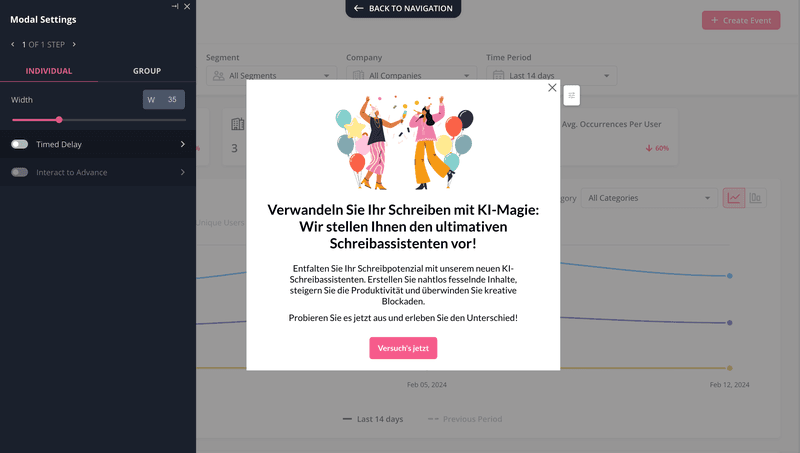
6. Provide great customer service
Providing excellent customer service is a no-brainer when it comes to improving CX.
This isn’t only about the response times of the customer support team or their competence when dealing with customer requests.
More and more users expect products to offer self-service support resources so that they don’t have to contact customer service reps in the first place.
To help your users solve their issues independently, consider creating a resource center with onboarding flows, product documentation, how-to guides, and video tutorials.
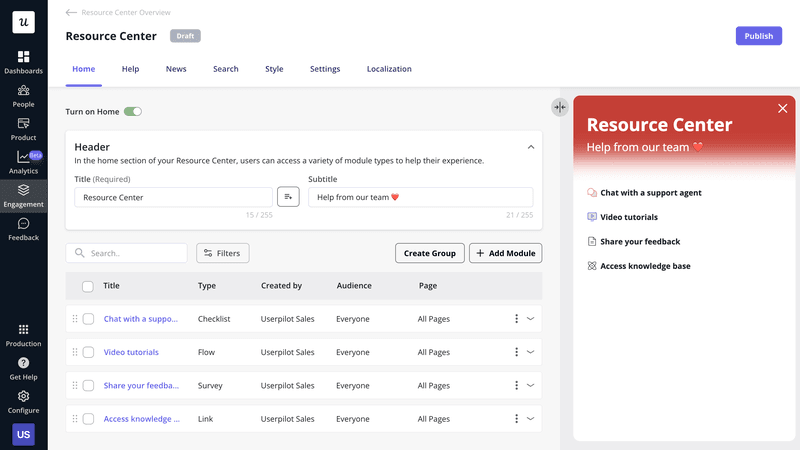
7. Improve your product’s copy with artificial intelligence
Product copy can make or break the customer experience. Clear and concise resources or microcopy guide users as they explore the product and help them achieve their goals. Poorly written content, on the other hand, confuses readers and adds friction.
How can you make sure your product’s copy is up to scratch?
Use AI. While the technology is still far from reliable, it provides decent results when it comes to processing text.
Many companies have embedded AI writing assistants in their products. For example, Userpilot allows you to create a new microcopy or rephrase an existing text and fix errors in no time.
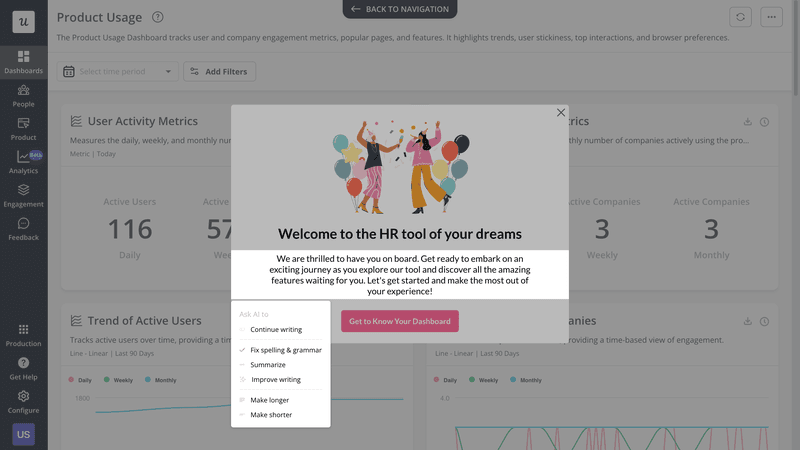
8. Announce new features to increase customer lifetime value
To keep up with constantly evolving market and customer needs, your product must evolve, too. New functionality adds value to the product, keeps your users engaged, and can be leveraged for account expansion.
As you’re adding new features, make sure to introduce them to your users.
Start by announcing them with a modal, like the one below. Reinforce the message with contextual tooltips or even walkthroughs triggered when the user might need the feature.
By structuring the feature announcement in this way, you create a buzz around the new feature launch and increase its adoption rate.
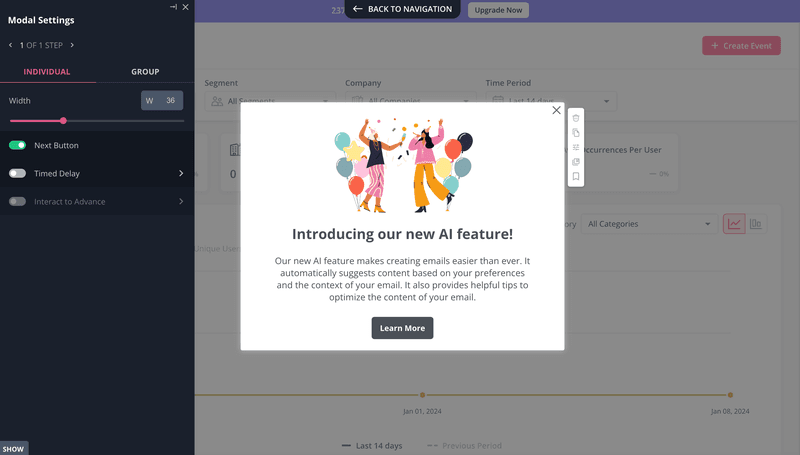
9. Create a consistent experience across multiple channels
As mentioned, customer experience management isn’t limited to customer interactions inside the product but all touchpoints in the user journey.
This includes your PPC ads, landing page, social media posts, blog posts, and conversations with the customer-facing teams.
To create an excellent customer experience, keep it consistent across all channels. This includes consistent branding, synchronized messaging, and tone of voice.
For example, if you’re announcing an update or a new feature, make sure to provide the same details in all your communications to avoid confusion.
10. Delight users to exceed customer expectations
Providing users with the core functionality that satisfies their basic needs is a must. However, to provide a truly delightful customer experience and captivate them for good, you need to exceed their expectations.
Here are a few ideas:
- Anticipate users’ needs and offer proactive support so that users don’t even have to reach out for help.
- Give exclusive access to new features and beta versions to the most loyal customers.
- Surprise users with something they don’t expect, like a free upgrade, a discount, or a celebratory message when they reach a milestone.
- Schedule regular check-ins with customers to discuss their goals, preferences, and pain points.
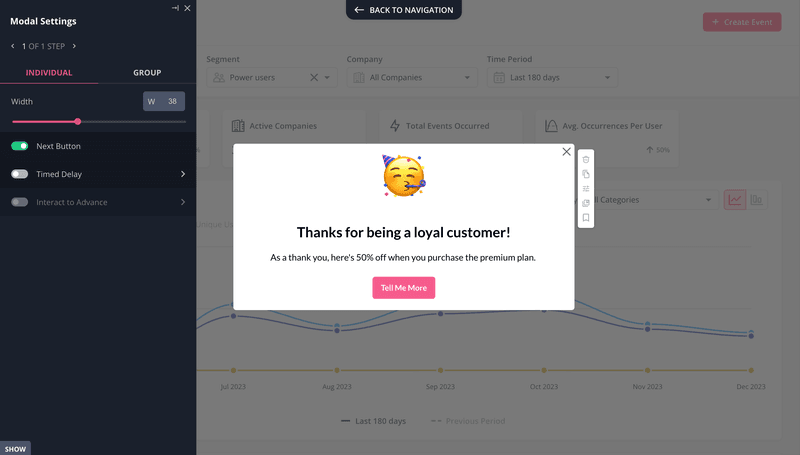
11. Create customer loyalty programs to increase engagement
Loyalty programs are another way to delight customers. And the best part is that they drive your business results.
The principle is simple:
Customers promote the product for you, for example, by inviting friends or colleagues, and in exchange, they receive perks like extra usage allowance or exclusive access to features.
This reduces your customer acquisition costs and keeps existing users engaged.
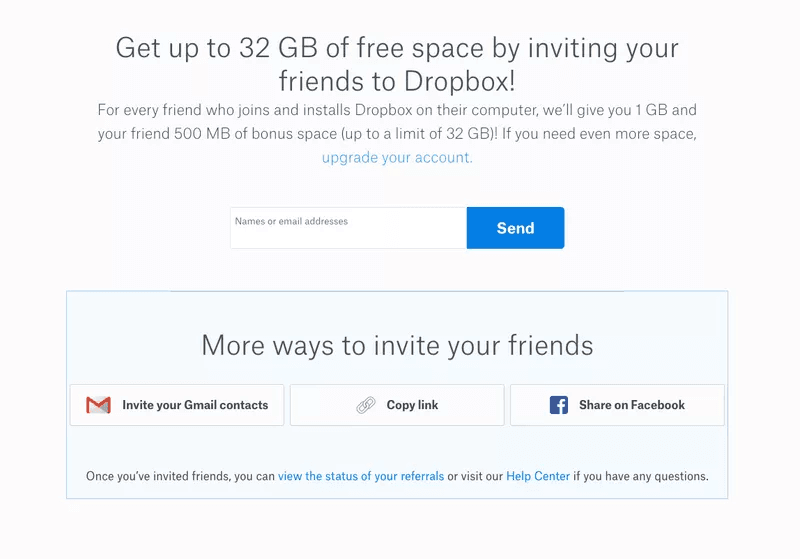
12. Interview unhappy customers on their poor customer experience
As soon as you receive negative feedback from customers, reach out to them and arrange an interview.
Interviews can be time-consuming and expensive, but they allow you to gain detailed insights into the subpar aspects of the customer experience that you wouldn’t be able to extract from survey responses.
What’s more, it shows users that you listen to their feedback and value their contributions. This might be enough to change their perception of the product.
13. Regularly monitor trends in customer behavior
Feedback isn’t always enough to pick up signs of customer dissatisfaction. While many users are keen to share their negative experiences, as I mentioned before, others simply give up and churn.
That’s why always triangulate your feedback results with product analytics data.
For example, a decline in feature or product usage by a particular user segment may indicate that the product no longer fulfills their needs.
Analytics can also help you identify behaviors leading to churn. Such knowledge allows you to engage users at risk of churning proactively and make them stick around.
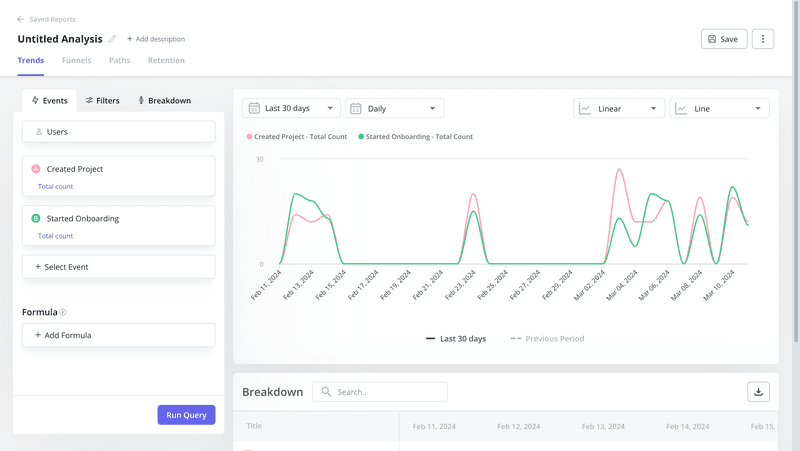
14. Offer integration capabilities with other tools
Integrations with other products allow users to streamline their workflows, expand their functionality, and automate manual and repetitive tasks.
Take the Userpilot-HubSpot integration as an example. Userpilot offers better analytics features so HubSpot users can use their behavior data to score leads, while customers can leverage HubSpot’s email capabilities for more comprehensive and consistent user engagement.
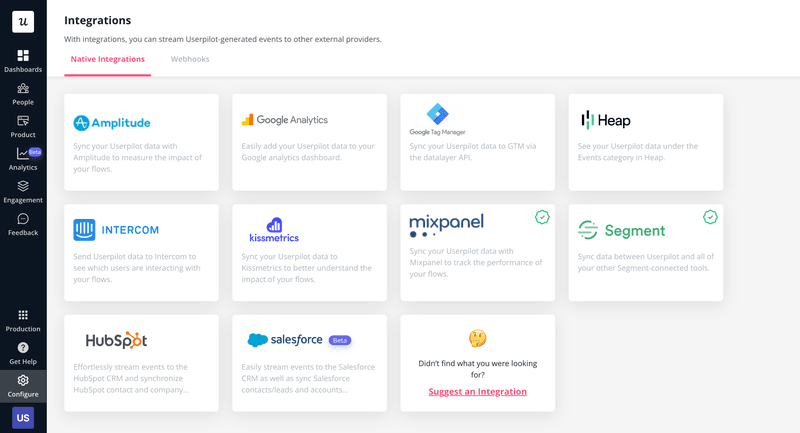
15. Create a strong community to engage customers
Building a customer community around your product can improve customer experience in a few ways.
For starters, community forums are an excellent place to share tips, solutions, and best practices. More importantly, it helps customers find solutions quickly, which is essential for a good experience.
Community discussions can help users unlock the full potential of the product by showing them features and use cases that they may not have been aware of.
Moreover, being part of a community gives customers a sense of belonging to a group with shared interests and goals. This emotional connection can increase loyalty to your brand.
Finally, the community can offer encouragement and motivation, especially in situations where your product is tied to challenging tasks or personal growth, like fitness apps or learning platforms.
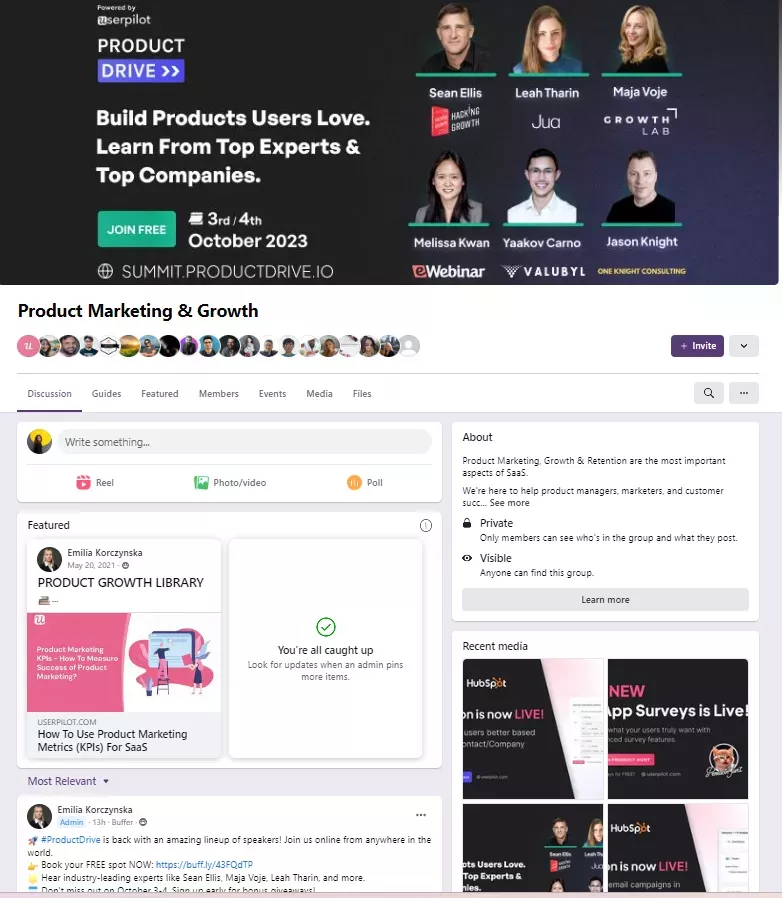
16. A/B test your customer experience strategy
Nailing your customer experience strategy requires a fair bit of trial and error and constant iterations.
Before you roll out new experiences to your users, consider running experiments with a smaller batch of users to iron out the kinks.
A/B testing is one way to do it.
In the test, you enable 2 versions of the same experience to 2 user groups from the same sample and track their performance to choose the better one.
In Userpilot, you can run A/B tests on in-app messages, UI patterns, and onboarding flows.
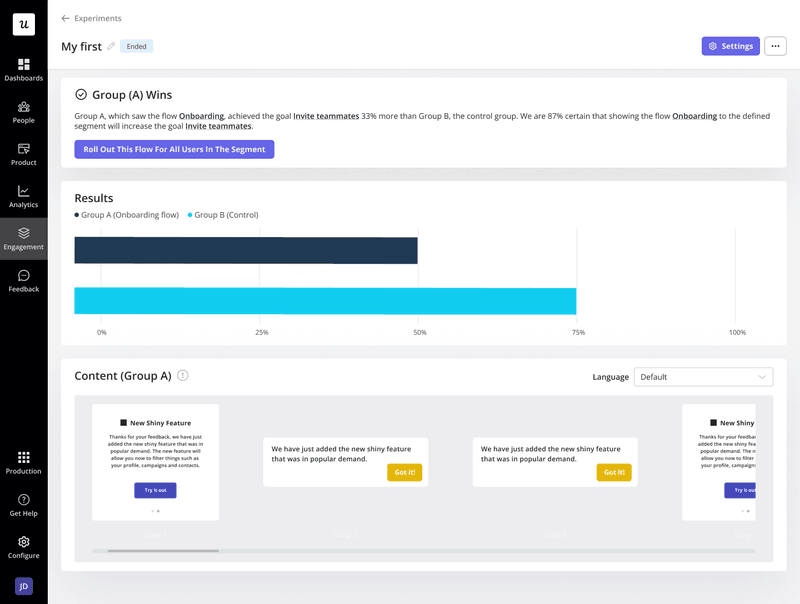
17. Empower employees to enhance customer experience
Let’s wrap up with the most important ingredient of customer experience: the people behind it.
To cut a long story short, to succeed, your organization needs a customer-centric culture in which all teams prioritize customer experience.
How to create such a culture?
Invest in data democratization so that the customer success team, product team, marketing team, and sales team all have access to the data they need.
More importantly, empower them to use insights in their initiatives to go above and beyond.
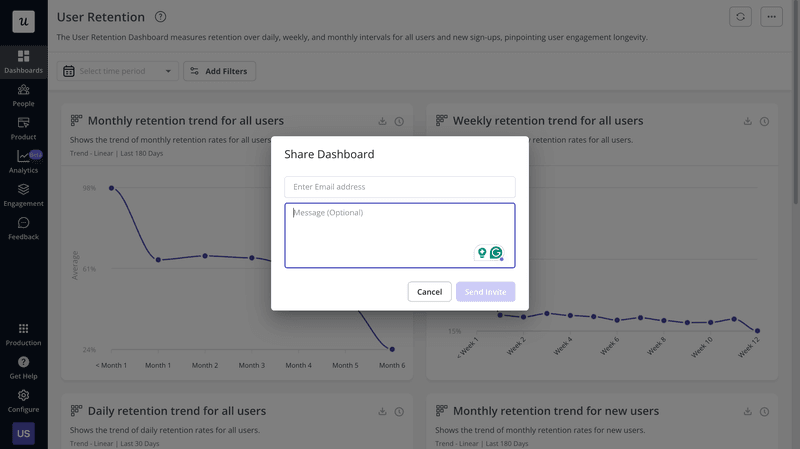
Conclusion
There’s no single best way to deliver an excellent customer experience in SaaS.
Instead, it requires a range of tactics and strategies to engage and support users at all stages of their journey to help them maximize the product value and enjoy the process.
If you’d like to see how Userpilot can help you create positive customer experiences, book the demo!







